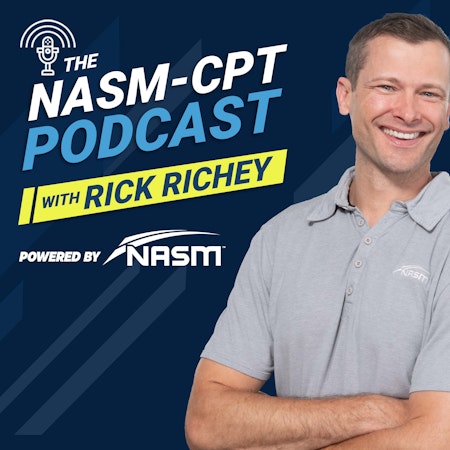
The NASM-CPT Podcast With Rick Richey
Are you studying to become a personal trainer or just started your training career? NASM Master Instructor Rick Richey takes listeners on an informative and engaging journey to help establish a solid foundation in your fitness path.
426
Rick’s Mailbag: Reciprocal Inhibition & Synergi...
20 min
427
Encore Presentation: Jake Olson
54 min
428
Supplements for Sports Performance
38 min
429
Encore Presentation: Julius Thomas – the Mental...
55 min
430
Encore Presentation: All About the Feet
69 min
431
150 Minutes of Physical Activity
20 min
432
Encore Presentation: Defining the Butt-Wink
22 min
433
Expand Your Interest as a CPT
19 min
434
CPT Success Tips from Clean Health Fitness
52 min
435
Integrating Wellness into Fitness Training
54 min
436
Tracking Your Metabolic Health
34 min
437
CPT 7 Setup & Exam Preparation
27 min
438
CPT 7 Professional Development and Responsibili...
33 min
439
CPT 7 Professional Development and Responsibili...
35 min
440
Exercise Technique & Training Instruction – Par...
30 min
441
Exercise Technique & Training Instruction – Part I
47 min
442
NASM-CPT 7 Program Designs – Special Populations
24 min
443
NASM-CPT 7 Program Design – The OPT Model
36 min
444
Posture, Movement, and Performance Assessments
39 min
445
Health, Wellness, and Fitness Assessment
39 min
446
NASM-CPT 7 Study Guide – Second Domain
40 min
447
NASM-CPT 7 Study Guide – Part III Nutrition Con...
26 min
448
NASM-CPT 7 Study Guide - Part II
49 min
449
NASM-CPT 7 Study Guide - Part I
36 min
450
NASM-CPT Study Guide: Basics and Applied Sciences
36 min